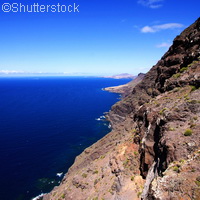Exclusive species found at higher altitudes
Researchers have long postulated that animal and vegetation species living in mountainous areas of high altitude are isolated, and thus much more exclusive. A new Spanish-German study substantiates this long-held theory, suggesting that altitude plays a key role in biodiversity. The findings of the study are published in the journal Ecography. Oceanic islands rise from the deep seabed to subsequently erode and disappear beneath the sea. While this process takes millions of years from start to finish, the islands change and become niches for diverse creatures that roam this planet. What happens to the species is that they adapt to the new environmental conditions, specialise and become exclusive. The rate of endemic ecosystems swells with respect to young islands with high mountainous ecosystems. 'After reaching [its] maximum height, the island's topography is at its most complex due to erosion, and it also has its highest level of biodiversity,' the Scientific Information and News Service (SINC) quoted Professor José María Fernandez-Palacios from the University of La Laguna in Spain as saying. The researcher noted that islands which have high mountainous ecosystems contain more exclusive species. The study highlighted the impact altitude has on an island's exclusive biodiversity. According to the researchers, the double isolation that affects species in highly mountainous conditions makes them unique. The highest islands, said the researchers, establish the conditions that give endemisms a boost. 'These higher mountainous island ecosystem species have evolved habitually from species that occupy the lower or middle areas of the islands in question,' Professor Fernández-Palacios explained. 'They are island species that have to adjust to very specific and rare ecosystems.' He added that the high mountain area in Tenerife consists of less than 10% of the island's surface and La Palma in the Canary Islands has around 1%. 'On islands that are more topographically complex, these species would not exist because the high mountain is the first to disappear from an island when it is eroded,' the ecology professor noted. The research showed that although there are currently no high-altitude mountains on the islands La Gomera and Gran Canaria because they are more than 10 million years old, there used to be, many years ago. The team said high mountains play a key role in younger islands including La Palma. The study also identified that La Gomera, which is 'older and wrinklier' than La Palma, has more biodiversity due to the existence of many exclusive ravine or hillside species. Said Professor Fernández-Palacios: 'La Palma is simpler, taller and bigger, but not so complex.' It should be noted that it has a number of high mountain species that unquestionably came from La Gomera. The species found in high altitudes follow one of two paths as the islands lose ground. 'If the nearby island is tall enough, they leap to this new territory and they survive there. If it has not reached an appropriate height, the species' ecosystem becomes extinct,' the researcher said.For more information, please visit: La Laguna University: http://www.ull.es/(opens in new window) Ecography: http://onlinelibrary.wiley.com/journal/10.1111/(ISSN)1600-0587(opens in new window)
Countries
Spain



